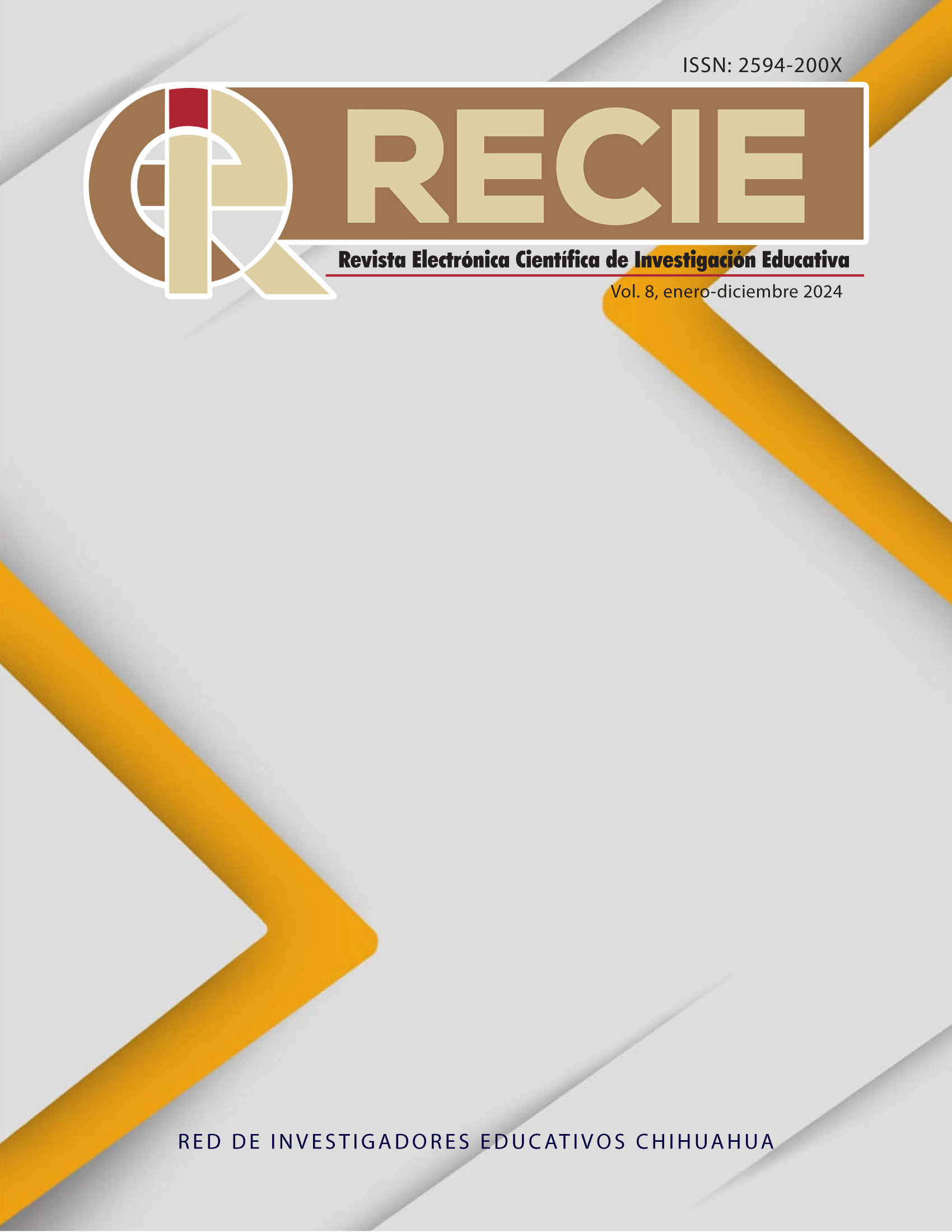Evaluation of didactic intervention for Industrial Engineering students, through experience in the use of an interactive tool
Published 2024-12-20
Keywords
- e-learning,
- interactivity,
- educational intervention,
- university didactics
- e-learning,
- interactividad,
- intervención educativa,
- didáctica universitaria
How to Cite
Copyright (c) 2024

This work is licensed under a Creative Commons Attribution-NonCommercial 4.0 International License.
Abstract
The objective of this research is to analyze the experiences of students from the Industrial Management Engineering program in the use of technological tools for inventory management as part of a didactic intervention, with the purpose of allowing them to experience the use of real software tools employed in the industry during their training, thereby enriching their future pedagogical practice. The approach used was quantitative, involving the participation of 48 students divided into two groups of 24 each (same semester, different instructor). Students reported a greater sense of support with the inclusion of the technological variable in the didactic intervention, although some issues were noted regarding technological skills. These results will be highly valuable for the appropriate design of technological components in the development of each course, as they identify areas for improvement in technological infrastructure, teacher training, and student development.
References
- Brunner, J.-J. (2012). La idea de universidad en tiempos de masificación. Revista Iberoamericana de Educación, 3(7), 130-143. https://www.redalyc.org/pdf/2991/299129031008.pdf
- Brambila, L., Camarena, M. d. J., Orozco, M. d. J., y Vizcaíno, A. d. J. (2006). El diseño instruccional como proceso coadyuvante de identidad profesional del trabajador social. Apertura, 6(4), 31-43. https://www.redalyc.org/articulo.oa?id=68800404
- Chávez Espinoza, J., y López, M. (2013). La formación de profesores universitarios en la aplicación de las TIC. Revista Electrónica Sinéctica, (41), 1-18. https://www.redalyc.org/pdf/998/99828325004.pdf
- Choi, Á. (2021). España ante la Revolución Industrial 4.0: mercado laboral y formación. Araucaria. Revista Iberoamericana de Filosofía, Política, Humanidades y Relaciones Internacionales, 23(47), 479-505. https://dx.doi.org/10.12795/araucaria.2021.i47.21
- De Armas-Rodríguez, N., y Barroso-Osuna, J. (2020). Cuestionario para diagnosticar la interactividad en la educación a distancia desde la percepción de los estudiantes. Luz, 19(2), 3-16. https://www.redalyc.org/journal/5891/589164533002/
- Domínguez, C., Organista Sandoval, J., y López Ornelas, M. (2018). Diseño instruccional para el desarrollo de contenidos educativos digitales para teléfonos inteligentes. Apertura, 10(2). http://www.udgvirtual.udg.mx/apertura/index.php/apertura/article/view/1346/969
- Hernández Sampieri, R., Fernández Collado, C., y Baptista Lucio, M. (2014). Metodología de la investigación (6a. ed.). McGraw-Hill.
- Kemouss, H., Abdennour, O., Erradi, M., y Khaldi, M. (2023). The ADDIE pedagogical engineering model: From analysis to evaluation. En M. Khaldi (ed.), Handbook of research on scripting, media coverage, and implementation of e-learning training in LMS platforms (pp. 42-70). IGI Global Scientific Publishing. https://doi.org/10.4018/978-1-6684-7634-5.ch003
- Margalef-Ciurana, I., y García-Tamarit, C. (2016). La aplicación de un recurso educativo digital en la dificultad de aprendizaje de la resta: un estudio de caso. Revista Electrónica Educare, 20(1), 1-22. http://dx.doi.org/10.15359/ree.20-1.13
- Matas, A. (2018). Diseño del formato de escalas tipo Likert: un estado de la cuestión. Revista Electrónica de Investigación Educativa, 20(1), 38-47. https://doi.org/10.24320/redie.2018.20.1.1347
- Morales Franco, E., Carrillo Andrés, S., Quiñónez Salcido, A., y Moranchel Pocaterra, M. (2021). Diálogo en la educación mediada por tecnología. Brazilian Journals of Business, 3(2), 1746-1763. https://doi.org/10.34140/bjbv3n2-031
- Moreno, M., Contreras, I., Gómez, S., y Martínez, L. (2014). Análisis de un diseño instruccional para aplicarlo en unidades curriculares híbridas. PAG Revista Iberoamericana de Producción Académica y Gestión Educativa, 1(1). https://www.pag.org.mx/index.php/PAG/article/view/121/168
- Ruiz Muñoz, G., Luque Letechi, A., y Paz Zamora, Y. (2024). Análisis comparativo de los modelos instruccionales ADDIE y SAM en el diseño de entornos de aprendizaje digitales. Reincisol, 3(5), 745-766. https://doi.org/10.59282/reincisol.V3(5)745-766%20
- Rahmadani, Herman, T., Dareng, S. Y., y Bakri, Z. (2020). Education for industry revolution 4.0: using flipped classroom in mathematics learning as alternative. Journal of Physics: Conference Series, 1521(3), 032038. https://doi.org/10.1088/1742-6596/1521/3/032038
- Rama Vitale, C. (2007). La despresencialización de la educación superior en América Latina: ¿tema de calidad, de cobertura, de internacionalización o de financiamiento? Apertura, 7(6), 32-49. http://www.udgvirtual.udg.mx/apertura/index.php/apertura4/article/view/82/94
- Rama Vitale, C. (2010). La tendencia a la despresencializacion de la educación superior en América Latina. RIED-Revista Iberoamericana de Educación a Distancia, 13(1), 39-72. https://doi.org/10.5944/ried.1.13.887
- Sapién Aguilar, A. L., Piñón Howlet, L. C., Gutiérrez Diez, M. D. C., y Bordas Beltrán, J. L. (2020). La educación superior durante la contingencia sanitaria COVID-19: uso de las TIC como herramientas de aprendizaje. Caso de estudio: alumnos de la Facultad de Contaduría y Administración. Revista Latina de Comunicación Social, (78), 309-328. https://doi.org/10.4185/RLCS-2020-1479
- Turpo-Gebera, O., Diaz-Zavala, R., Delgado-Sarmiento, Y., Gutiérrez-Salcedo, E., y Gonzales-Miñán, M. (2023). Interacciones didácticas en el blended learning: dinámicas de construcción del conocimiento. Human Review. International Humanities Review/Revista Internacional de Humanidades, 21(2), 465-475. https://eaapublishing.org/journals/index.php/humanrev/article/view/1733/1850
- Zea, M., Morán Chiquito, D., Vergara Romero, A., y Jimber del Río, J. (2020). Modelos de satisfacción al cliente: un análisis de los índices más relevantes. Res Non Verba. Revista Científica, 12(2), 146-178. https://doi.org/10.21855/resnonverba.v12i2.735
- Zubieta, J., y Rama, C. (coords.) (2015). La educación a distancia en México: una nueva realidad universitaria. Coordinación de Universidad Abierta y Educación a Distancia, UNAM-Virtual Educa. https://recursos.educoas.org/publicaciones/la-educaci-n-distancia-en-m-xico-una-nueva-realidad-universitaria


